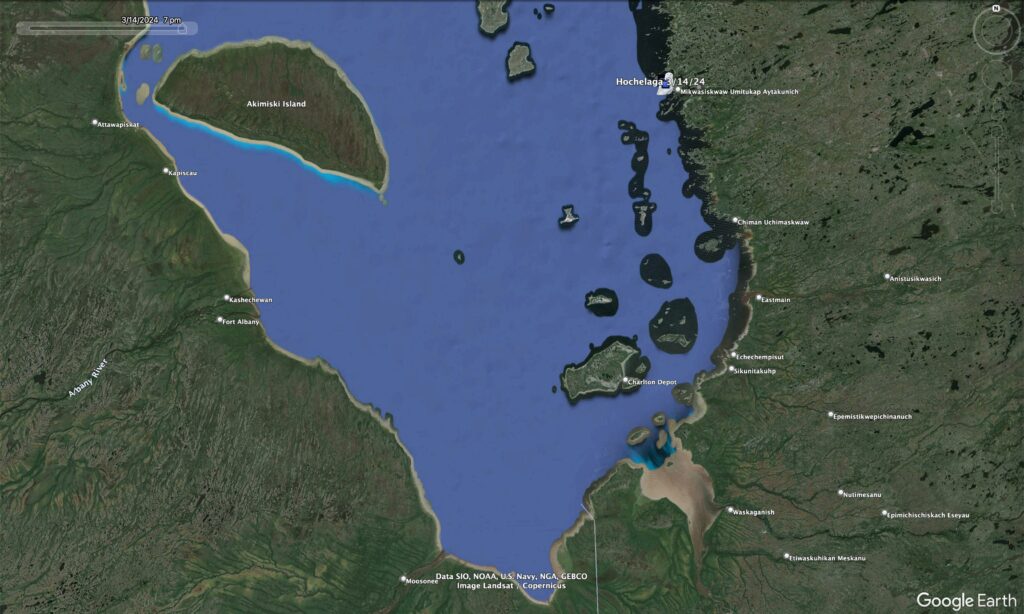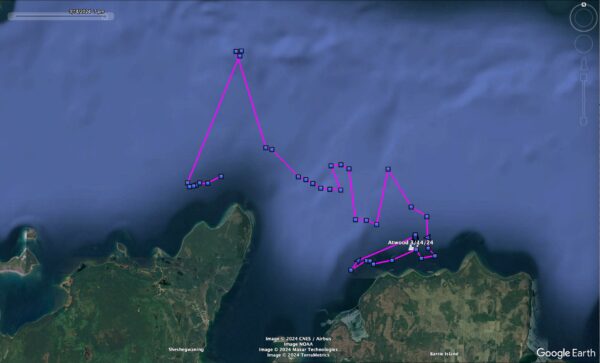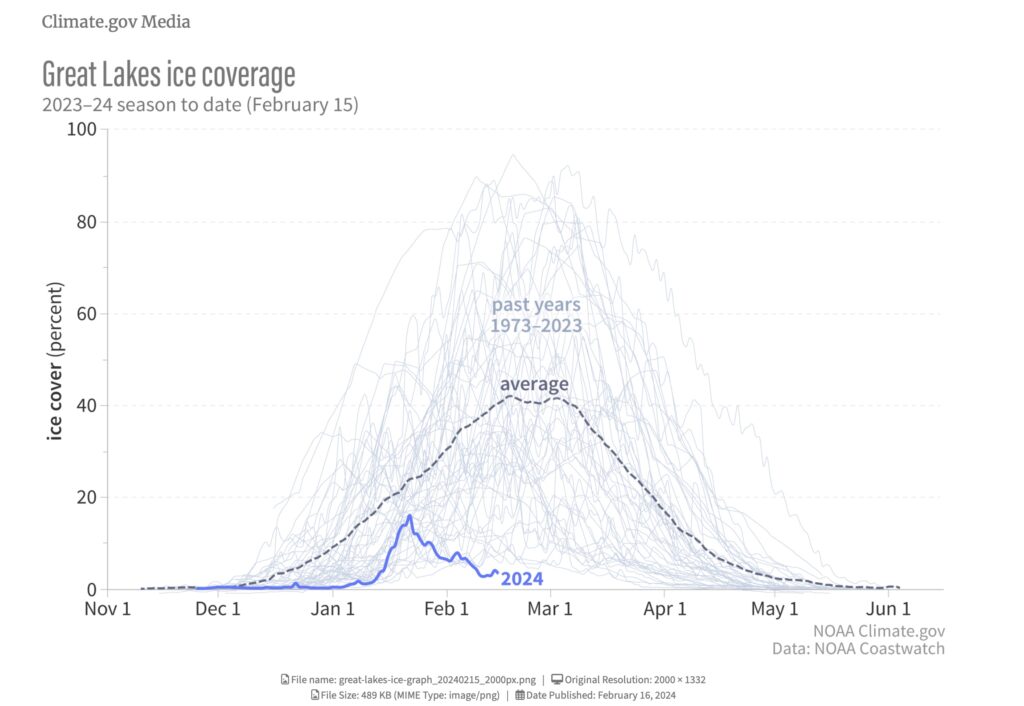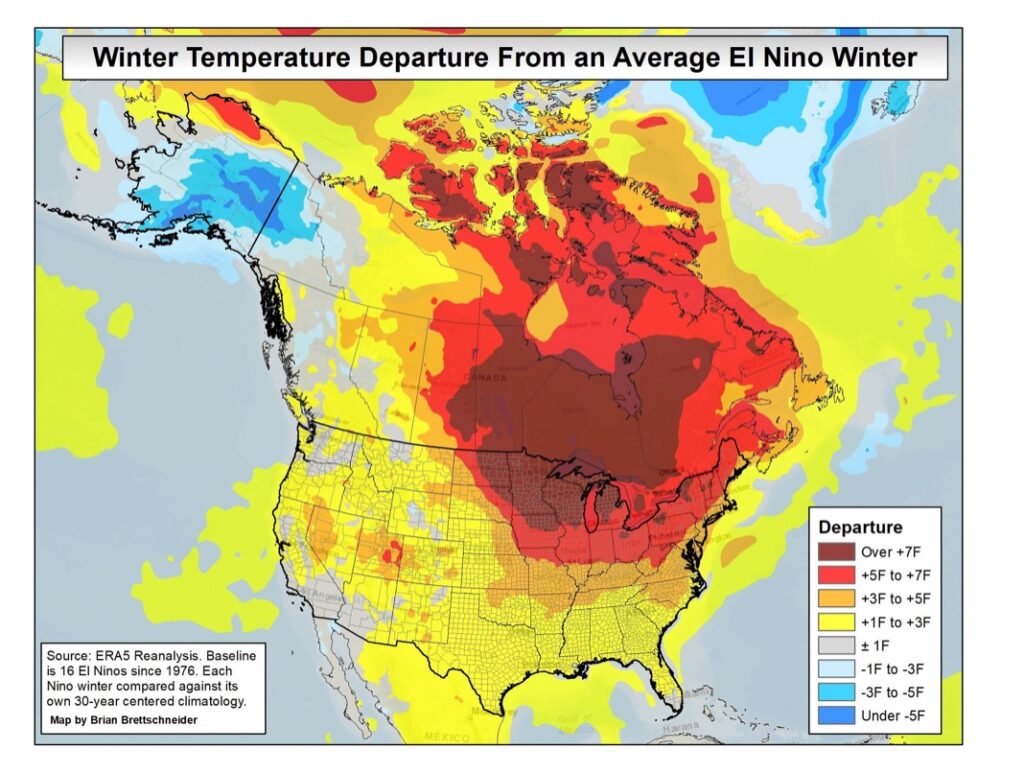
Hochelaga is about halfway up James Bay and heading north.(©Project SNOWstorm and Google Earth)
Just a quick bit of news for everyone who (like me, I must admit) might have been worried about Hochelaga, the adult male who likes to winter near the Montréal airport and who has been largely out of touch the past two weeks. Yesterday evening, March 14, he checked in — and no wonder he wasn’t connecting via cell. He’s about halfway up the east side of James Bay, not far from the small Cree community of Wemindji, which apparently has cell service.
We didn’t get much data from him; his transmitter had been in sleep mode, but the good news is that his voltage is steadily climbing as we move toward the equinox and longer days, so the battery issues should be behind us. Even if we don’t get another transmission from him as he heads north, his transmitter will be storing up all of his GPS locations for his return south next winter.

Somehow, Atwood found that rarest of perches this winter — ice on Lake Huron. (©Project SNOWstorm and Google Earth)
Everyone else is pretty much where we last left them. Newton made a little jog down to the Earlton, ON, airport and then back north again, while Loren moved closer to the St. Lawrence. Atwood is hanging out on North Channel in Lake Huron. Satellite imagery doesn’t show much ice remaining there, but it looks like she’s found a few pieces to float on, another indication (as we’ve noted so often in the past) of how much snowy owls like ice.
That’s been an issue this year, when the Great Lakes recorded their warmest winter ever, along with all-time low winter ice cover; Lake Huron actually had the most ice of any lake this week, with a measly 3.04 percent. Below is a graph from NOAA updated through February to show what an anomaly this winter has been from an ice perspective…

Great Lakes ice cover, Feb. 15, 2024. (NOAA)

2023-24 winter temperature departures from an average El Niño winter. (Climate.gov)
And this eye-popping map (above) makes clear what a bizarre winter it was for temperatures, even taking the strong El Niño into account; any wonder some of our owls, like Otter, never bothered to come very far south? This is obviously disquieting news for a snow- and ice-loving raptor, and our tracking data is proving to be an important window into how snowy owls are responding to this rapidly changing environment.


3 Comments on “Hochelaga Update”
Wow, so Hochelaga is well on his way back north. Thanks for letting us know Scott!!
Scott, I noticed the same “Snowy Owls like ice” effect in the few birds seen in eastern North Dakota this season.
Normally, frigid-weather ND Snowies would be seen on elevated perches such as trees, wooden power poles, and fence- or sign-posts. As temperatures in farm country soared above freezing this winter, birds were more often seen on the ground, even low ground vs hills/hillocks, and even though they were often seen in warm dark-dirt farm fields. I think it was due to the few remaining patches of snow and ice in those fields luring them in.
Examples can be seen in the photos attached to these eBird checklists:
https://ebird.org/checklist/S163604883
https://ebird.org/checklist/S162931578
(Readers: copy and paste each one into your browser address bar, then hit Enter to see the checklist pages/pics)
Thanks for the update on Hochelaga and all the owls. Appreciate the information on how the ice, and lack of winter is affecting them.